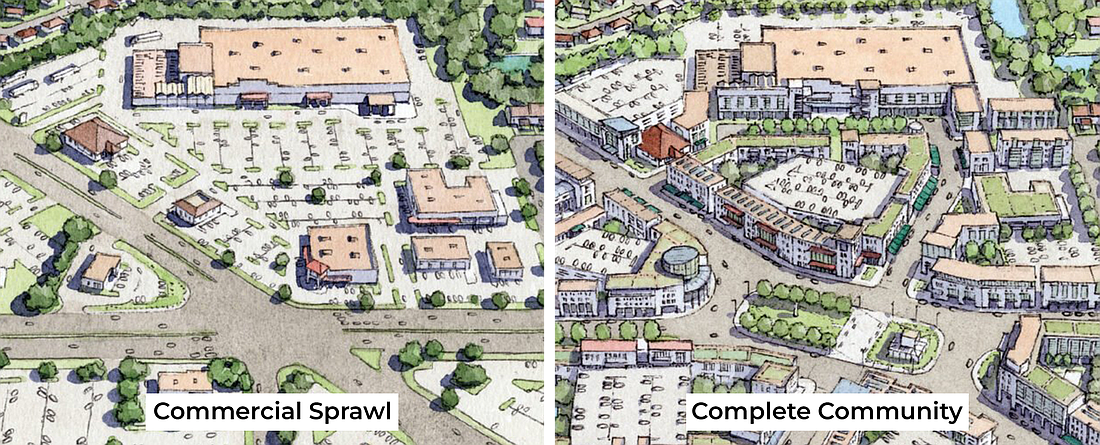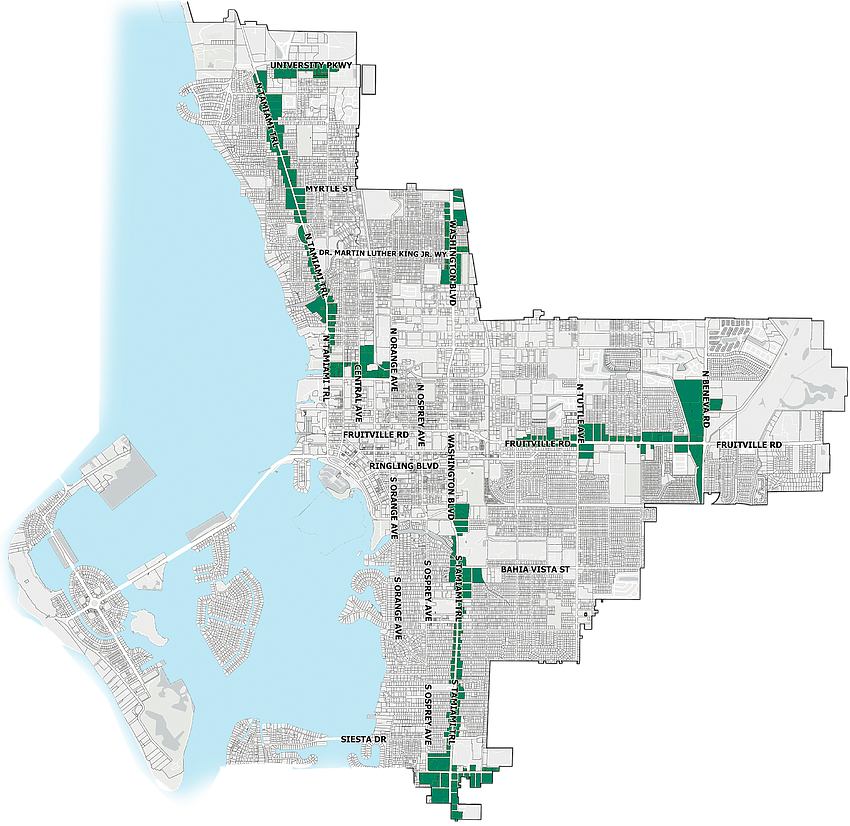- May 4, 2024
-
-
Loading

Loading

Before affordable housing incentives are applied to redevelopment of commercial centers and corridors throughout Sarasota, at least one city commissioner wants staff to consider what she calls the worst-case scenario of parcels combined to create 3-acre sites eligible for more intense mixed uses.
Vice Mayor Jen Ahearn-Koch raised this concern as commissioners discussed the Planning Department's proposed zoning text amendment during its Jan. 8 workshop.
As an example of her concerns, Ahearn-Koch pointed to the planned Calypso Sarasota, which will combine three parcels along North Tamiami Trail to build a 224-unit apartment complex in a single building stretching more than two football fields in length along the roadway.
She's concerned about a proliferation of such projects outside the political process, as the ordinance will permit administrative approval.
The ordinance encourages development in areas identified in the comprehensive plan as a future land use mixed use. Residents have expressed concerns to staff and commissioners that allowing up to five-story buildings on parcels 3 acres or larger will result in “canyons” along the main thoroughfares.
Planning staff members attempted to allay those fears by suggesting not every future development in those zoning districts will include an affordable housing component, and that setback requirements will provide separation between any taller buildings and the roadways as well as to adjacent single-family neighborhoods.
“There are currently 35 existing commercial centers with 35 parcels that are 3 acres or larger, and there are more than 700 parcels with the Urban Mixed Use future land use classification,” said Senior Planner Brianna Dobbs. “Less than 5% of the parcels would be able to achieve that five stories, so most of this would be developed at three and four stories.”
That wasn’t enough to convince Ahearn-Koch, who acknowledged that the max building height may not proliferate, but it could happen if a developer assembles enough adjacent parcels to qualify.
“Somebody did assemble a whole bunch of parcels,” she said of Calypso Sarasota, which does not include affordable units but is being developed under North Trail Overlay District standards. “They are building 600 feet all the way down the North Trail, so in that scenario, somebody could assemble parcels to make their 3 acres to be eligible for the five stories. When I have to look at what is the worst-case scenario, and I think that's what this illustrates, is that somebody could all along the North Trail assemble 3-acre parcels and be eligible for the five stories.”
Staff confirmed that to be theoretically correct, but less so in practice.
“Academic exercises can always be a lot of fun,” Planning Director Steven Cover said of a communication received from a citizen. “This is assuming that every building will have attainable housing and will go for the extra height. We all know that that's not going to happen. It also assumes that every building would have 14 feet from floor to ceiling. Most buildings actually have 10- to 12-foot floor-to-ceiling heights, and 14 feet obviously would be much more expensive to build and probably will not be used in projects that are proposing attainable housing.
"Thirdly, (it assumes) every building will have a mezzanine. Speaking for the Development Services Department, much less than 10% of the buildings that are submitted propose a mezzanine. That would make the building more expensive and I don't think you'll be seeing any attainable housing projects using a mezzanine."
Any mixed-use project in those zoning districts with an affordable housing component will require the same three tiers of affordability as currently exists in the downtown zoning districts. One-third must be priced at household incomes of 80% or below area media income, one-third at 81%-100% AMI and one-third at 101%-120% AMI. Rents, including utilities, must be priced at no more than 30% of the household incomes in each of those tiers. At least 15% of the bonus density units awarded must be affordable.

Additionally, the affordable units must be in effect for 30 years.
General Manager of Planning Ryan Chapdelain said since the North Trail Overlay District incentives were put in place a decade ago to encourage redevelopment, only one four-story building has been built.
“We’re talking one more story to get attainable housing,” Chapdelain said. “That's one building constructed in the last 10 years, so I don't think we're going to see this mass movement to construct 91-foot buildings up and down these corridors. This is decades and decades to implement. But if it's yielding more attainable housing, and having to meet all these development design standards, I think that's what we want.”
Commissioner Kyle Battie agreed. “I was speaking to a developer the other day, and it's not feasible to go as high,” Battie said. “The money's not there. Right now, what we have currently when it comes to affordable housing, we’re yielding zero. I’ll take 15% over zero all day long.”